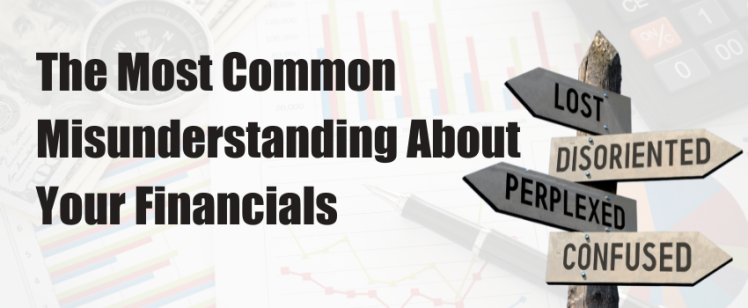-
The Most Common Misunderstanding About Your Financials
Tax time is a stressful time for everyone, not just tax preparers. We talk with many business owners, and the most significant pain point they have is why the financial information doesn’t match what they think it should. If this is you, you are not alone. We often spend time with our clients talking about why the numbers are recorded in a way that makes sense accounting-wise but may not make sense until you get a proper explanation…and sometimes you need to hear the explanation more than once.
These are the top 5 questions that we often hear from business owners:
I am repaying a loan- it is taking a bunch of cash each month- how come it is not all an expense?
When you got the loan- either for a vehicle, building, or just needed capital, you got some cash to make the purchase or to add to your bank account. As you repay the loan, the money you are giving back to the bank is mostly theirs, and you are just giving it back with interest. The interest on the money is considered an expense. If your loan payment is $105.00 and $5.00 is interest. $100 is recorded on your books as paying down the loan (reducing the loan/liability on your balance sheet), and $5.00 is recorded on your profit and loss as an expense.
Why do I show so much profit, but my bank balance is low? Where is all my money?
There are multiple answers to this question, but I will use the most common responses we give. Your bank balance decreases when you pay a loan (like in the example above) but it doesn’t increase your expenses in the total amount. This means that more cash goes out of your bank account, and it doesn’t equal an expense on your profit and loss. If you have a lot of loans, that eats up your cash but doesn’t lower your profits. Same is true for the owner’s draw. When the owner takes money out of the business for personal expenses, it is not an expense to the business. It lowers the cash in the bank but doesn’t lower the profit. If you don’t fit into either one of these situations, then you should reach out, and we can figure out what is going on for you.
Why isn’t the owner’s draw an expense?
The owner’s draw is when the owner takes our money for personal use. This money can be used for anything the owner wants. It is not an expense to the company because the money has not been used for an expense associated with the business. The owner can take a salary through payroll- and that is an expense to the business, BUT only S-corps and C-corps can have the owner on payroll. Sole proprietors and LLC owners will take distributions from the business in the form of an owner’s draw.
When I pay income taxes on my business profit -why aren’t they an expense to the business?
It depends on your entity structure- this is why it’s essential to know if you are a sole proprietor, Limited liability company, S-corp or a C corp.
Sole proprietors, LLCs, and S-corps all are considered ‘flow through’ entities- which means that the profit ‘flows’ to the owners- all of it. The downside is that you have to pay tax on it- but on a good note you made a profit! This tax payment comes from the owner and not the entity, as it is considered income to the owner.
C-corps pay taxes on the profit of the company- and it is an expense to the company. For more detailed information, consult with your tax professional and they can tell you which entity is right for you.
I felt blind sided with my tax bill this year- how much money should I set aside for taxes?
That is the worst feeling……so let’s avoid it in the future. You should ask your tax professional for more information about this, but in our experience, if you keep aside about 30% of profits for taxes, you will be prepared for paying taxes when the time comes. You can also make quarterly estimated tax payments- this is a pay-as-you-go and the one the IRS strongly recommends.
- (609) 759-5881
- Contact us
